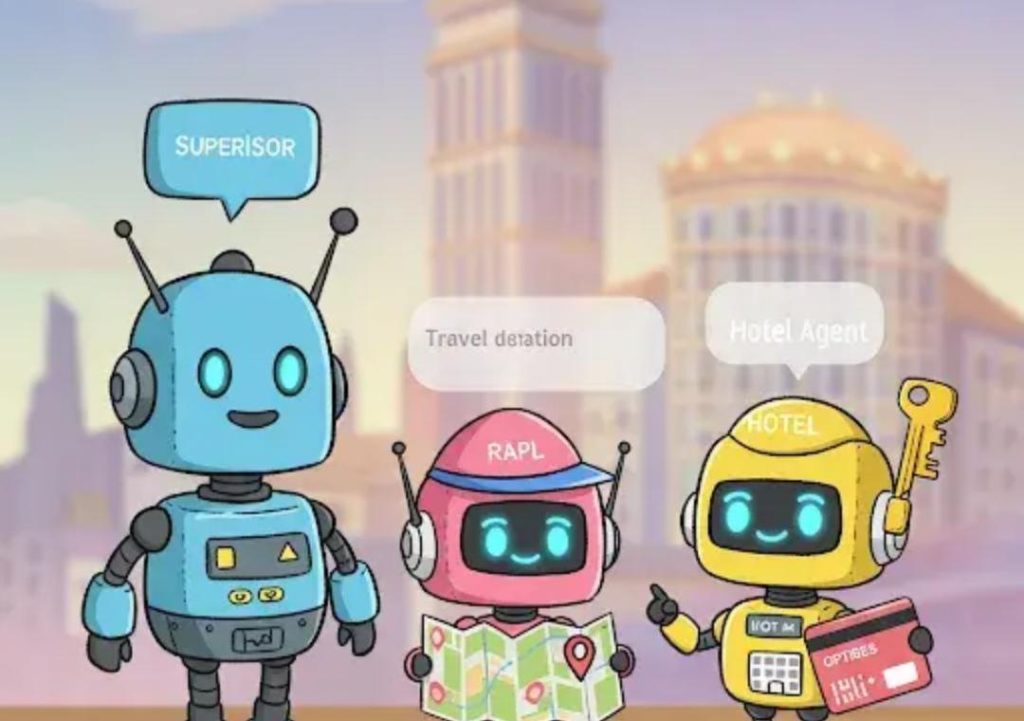
Multi-agent Collaboration Mimics Real Team Dynamics
In the world of Artificial Intelligence (AI), we’ve long been familiar with the concept of single-agent systems. These systems rely on a single AI agent to perform tasks, often with varying degrees of success. However, as AI continues to evolve, researchers and developers are recognizing the benefits of a different approach: multi-agent systems. By deploying multiple AI agents, each specializing in specific tasks, we can create digital workflows that mirror human teamwork, but with the speed and scale of machines.
In this blog post, we’ll explore the concept of multi-agent collaboration, its benefits, and how it can be applied to various industries, including research, validation, and reporting.
What are Multi-agent Systems?
A multi-agent system is a decentralized system composed of multiple autonomous agents that interact and collaborate with each other to achieve a common goal. Each agent can be thought of as a mini AI system, designed to perform specific tasks or functions. These agents communicate with each other, share information, and make decisions based on their individual expertise and the information they’ve gathered.
In a real-world setting, multi-agent systems can be seen in various forms of teamwork. For instance, a research team typically consists of multiple researchers with different areas of expertise. Each researcher contributes their knowledge and skills to the project, and they work together to achieve a common goal. Similarly, in a business setting, a marketing team may consist of multiple agents, each responsible for a specific aspect of the marketing strategy.
Benefits of Multi-agent Collaboration
So, what are the benefits of deploying multiple AI agents instead of relying on a single agent? Here are a few:
- Specialization: Each agent can be designed to specialize in a specific task or function, allowing for greater efficiency and accuracy.
- Flexibility: With multiple agents, you can easily adapt to changing requirements or task priorities by simply reassigning agents or adjusting their roles.
- Scalability: Multi-agent systems can be easily scaled up or down depending on the requirements of the project or task.
- Resilience: If one agent fails or becomes unavailable, the other agents can continue to function and complete the task.
- Improved Decision-Making: By combining the expertise and insights of multiple agents, you can make more informed and accurate decisions.
Real-world Applications of Multi-agent Systems
Multi-agent systems have a wide range of applications across various industries, including:
- Research: In research, multi-agent systems can be used to facilitate collaboration and knowledge sharing among researchers. For example, a multi-agent system can be designed to analyze and combine the results of multiple research studies, providing a more comprehensive understanding of the topic.
- Validation: In validation, multi-agent systems can be used to ensure that a system or process meets the required standards and regulations. For instance, a multi-agent system can be designed to validate the accuracy of a medical diagnosis or the compliance of a financial transaction with regulatory requirements.
- Reporting: In reporting, multi-agent systems can be used to generate reports and analyze data from multiple sources. For example, a multi-agent system can be designed to generate a financial report by combining data from multiple sources, such as accounting software and market research.
Conclusion
Multi-agent collaboration is an exciting and rapidly evolving field that has the potential to revolutionize the way we approach AI development and deployment. By creating digital workflows that mirror human teamwork, we can achieve greater efficiency, accuracy, and scalability in a wide range of applications. Whether it’s research, validation, or reporting, multi-agent systems offer a powerful tool for achieving complex tasks and solving complex problems.
Source:
https://www.growthjockey.com/blogs/build-ai-agents
Note: The article is based on the original blog post from Growth Jockey, and any modifications or changes made are for the purpose of reformatting and rephrasing the content to fit the word count and style of the blog post.






